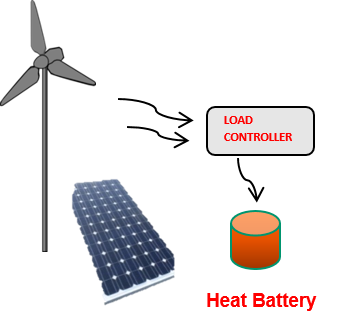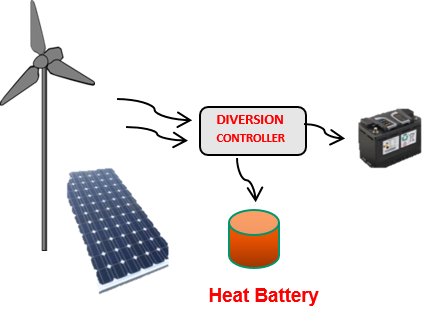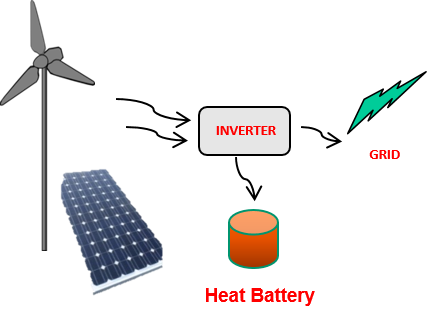The energy collection surface needs to be higher (PV has low energy conversion efficiency) but the systems become simpler:
- Not so sensitive to solar tracking
- Works also with indirect sunshine
- No heat transfer loop, the energy transport is an electric wire
- Flexibility in the location of the heat source (heating element) in the storage
- Can combine PV/Hydro/Wind
- Can be stand-alone or integrated with existing systems (e.g. battery based or grid-connected system)
- Can most often be upscaled more readily
- Technically simpler than concentrators with heat transfer systems
- Can be easier to produce and maintain locally
 |
Stand alone PV - heat
|
 |
Excess power to heat storage
|
 |
Grid connected
|